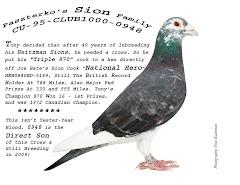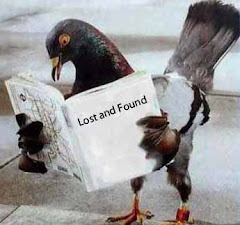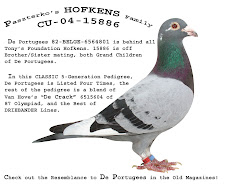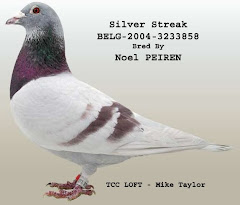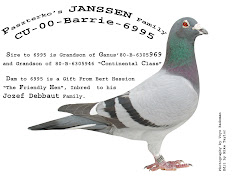What is better: alone or in a group?
Scientifically speaking this controversy remains unresolved. There are researchers who are of the opinion that the return flight goes off better when only a small group are involved. Their arguments are: jealousy and less chance of being led astray. Keeton in contrast thinks that small groups of up to four pigeons do certainly not give a better performance than lone flyer's.
For flying competitions these findings are however not very relevant, for what do we find there? Huge masses of pigeons which are all liberated at once and will in addition make off for different lofts. Pigeons have a strong social sense, so they like flying together in a kit. Such a large group tends to sweep along other pigeons too.
Fanciers from an area with the largest participation occupy the best loft positions in a race in which the pigeons are not divided up equally over the whole radius. This advantage diminishes with increasing distance. The direction the wind blows from also works for or against this advantage.
A good example is the Belgian National race from Bourges in which every year a great number of old and young birds take part. During these flights there is generally a west to southwest wind. Participation from the centre of the country is overwhelming. Prospects for players from the west are not too rosy under these circumstances. It will take quite a strong easterly wind to neutralise the mass effect of the participation of all the pigeons from the centre.
Taken from
The Big Pigeon Racing Book
by A. van den Hoek
Prof. Dr. G. van Grembergen
J. Hermans







